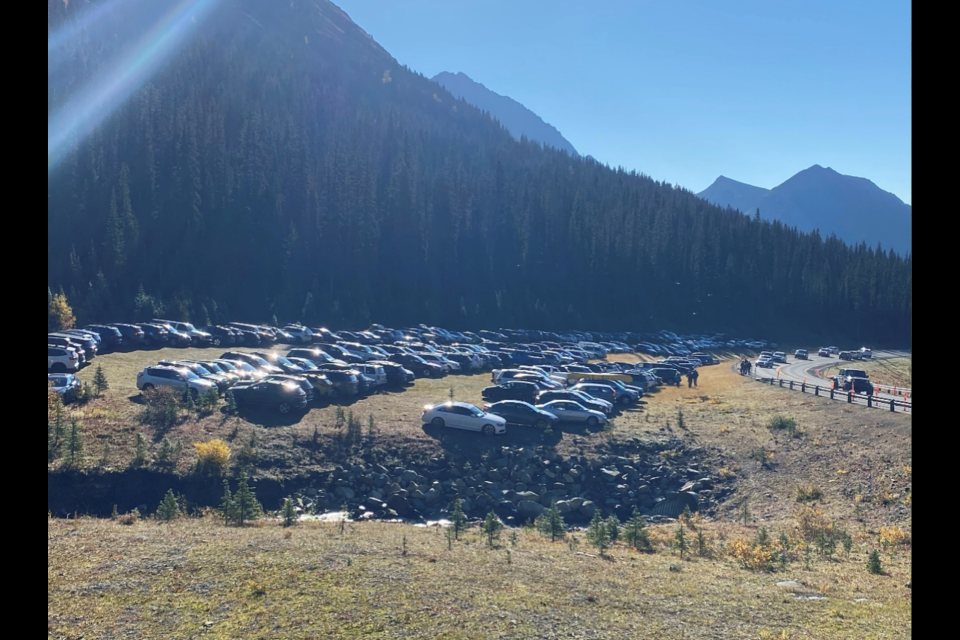KANANASKIS COUNTRY – What is your primary mode of transportation to Kananaskis and the MD of Bighorn, and what types of transit options would you consider using as a resident or visitor?
A survey circulating as part of an ongoing transit feasibility study spearheaded by the Kananaskis Improvement District (KID) and MD of Bighorn wants to know the answer to these questions.
“I’m excited to see what comes out of this survey,” said MD of Bighorn Reeve Lisa Rosvold. “The question has been asked to me a number of times over the last six years about whether the MD could ever participate in a transit program – from everywhere between Harvie Heights, Dead Man’s Flats, Lac Des Arcs and Exshaw.
“I haven’t heard about it too much in the Ranchlands area, but we’re asking everybody because this feasibility study is for the whole MD of Bighorn [and Kananaskis].”
The survey by Dillon Consulting – hired by the MD and KID to conduct the feasibility study – asks whether respondents are visitors or residents in Kananaskis or the MD and if they work in the area or visit for recreation, and from where they might be travelling.
Questions also ask if respondents have regular access to a vehicle, about primary modes of transportation – using a personal vehicle as a driver or passenger, carpooling, carsharing, taxiing, or others.
The survey asks if respondents might consider using transit options like fixed routes, an on-demand service, flex routes, or subsidized services like Uber, and whether they would use a service for getting to work, school, or for accessing retail services or hiking trails and other outdoor activities.
In conversation with MD residents, Rosvold said she’s heard from those in support of a transit service that they would use it for better connectivity to schools and after school activities for students, as well as for better accessibility for seniors, with little to no access in small MD communities to various social services like clinics.
“We’ve got an aging demographic in some of our hamlets, so just opening up that transportation network for them, as well,” she said. “There also could be some obvious environmental positives that could come out of it in reducing the number of vehicles on the road.”
Concerns she’s heard from residents are primarily around taxpayer costs, given the MD’s expansive footprint of 2,664 square kilometres, compared to its relatively small population of about 1,600 people.
“I think we average about two square kilometres per person, so trying to understand what a feasible transportation network could like will be interesting,” she said.
In Kananaskis, public transit has been discussed to address issues of attracting and retaining workers and accessibility for residents and visitors. The area has an even smaller tax base of about 250 residents, but there are over four million visitors to Kananaskis annually and the only access to the area is by personal vehicle, which has led to increasing traffic and parking pressures, especially along the busy Highway 40 corridor.
There are plans to connect Canmore’s Roam transit system to Grassi Lakes and nearby trailheads starting in May, however, there are currently no public transit options in the rest of the Kananaskis region.
In 2022, Alberta Parks studied visitor use in Highwood Pass – a popular region in Kananaskis for its access to larch hikes in the fall.
Measures such as reduced speed limits, additional parking controls and additional staff have formerly been deployed in the area to address public safety during what is often one of the busiest times of year for visitors.
In a presentation to KID council in November 2022, Alberta Parks personnel said facilities in Highwood Pass were insufficient for current use, and expressed willingness to potentially partner with KID to look at public transit solutions. Since that time, a transit committee has formed to include representatives with KID as well as an Alberta Parks employee in an advisory role.
The MD also has its own committee working in partnership with KID.
A final transit plan is expected to be presented to KID and MD councils in fall 2024.
“The transit plan will consider service options, financing, and steps to implement a transit system for Kananaskis and the MD of Bighorn,” reads KID’s website. “Feedback received as part of the transit feasibility study will support the development of the transit plan.”
Rosvold said it’s exciting to consider the possibilities for transit in the region and to better understand what the public wants in the consultant’s survey.
“After that, then we will take next steps, or we won’t, but it’s just about answering that question that’s been lingering for so many years,” she said.
Engagement with residents, employees, and visitors to Kananaskis and the MD will take place between March and July. The survey is open to all and can be accessed at www.kananaskisid.ca/p/transit.
The Local Journalism Initiative is funded by the Government of Canada. The position covers Îyârhe (Stoney) Nakoda First Nation and Kananaskis Country.




